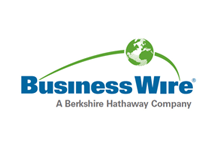Global Electronics Components Plastics Market Report to 2028: Featuring Ashland, BASF, Celanese, Covestro and Cytec Industries Among Others - ResearchAndMarkets.com
The "Plastics in Electronics Components: Technologies and Global Markets" report has been added to ResearchAndMarkets.com's offering.
This study covers all electronic components where plastics are used to a significant extent. It concentrates on components produced by injection molding compression molding, and encapsulation. It does not cover wire and cable, films used in capacitors or recording media, or enclosures.
The study also identifies major material suppliers and key processors. It reviews important new technologies, as well as changes in legislation and industry standards and norms that may have significant effects on markets for electronic components, and it looks at interpolymer competition.
Companies Mentioned
- Asahi Kasei Corp.
- Ashland Inc.
- BASF
- Celanese
- Covestro AG
- Cytec Industries Inc.
- Dsm
- Dupont De Nemours and Co.
- Ems Grivory
- Epic Resins
- Henkel AG
- Huntsman International LLC
- Interplastic Corp.
- Kingfa Science and Technology Co. Ltd.
- Lanxess AG
- Mitsubishi Engineering-Plastics Corp.
- Polyplastics
- Sabic Innovative Plastics
- Solvay Specialty Polymers
- Sumitomo Bakelite
- Toray Plastics
- Victrex plc
Report Includes
- 61 data tables and 23 additional tables
- An overview of the global markets and technologies for plastics in electronics components
- Analyses of the global market trends, with data for 2022, 2023 and projections of compound annual growth rates (CAGRs) through 2028
- Estimation of the market size and revenue forecast for plastics in electronics components, and market share analysis by type, end-user, and region
- Highlights of the market opportunities, and major issues and trends affecting the plastic industry
- Insight into the recent industry structure, regulations and policies, pipeline products, and the vendor landscape of the market leading participants
From the early days of valves to the creation of the transistor and later the integrated circuit, much of the progress made by the electronics industry towards ever-greater miniaturization has only been made possible due to the availability of different polymeric materials.
The development of numerous novel plastics expressly for use in electrical and electronic device applications has led to the ongoing growth of both the electronics and plastics sectors. Electronics components have seen a large drop in real cost performance over time.
This decline can be partially attributable to the availability and performance of novel polymeric materials. A specific example is the development of the personal computer, where advancements in polymer-based photoresists and plastic encapsulation techniques have made it possible to mass produce high-density memories and microprocessors at a price that makes devices more potent than mainframe computers of thirty years ago available for barely more than the cost of a toy.
The creation of electrical and electronic equipment today uses a variety of plastic materials extensively, from insulator moldings for the largest bushings and transformers to alpha particle barriers on memory devices. Plastics, or more precisely polymers, are used in a variety of applications including equipment casings, protective coatings, wire and cable insulators, printed circuit board components, die-to-attach adhesives, and packaging for individual microcircuits.
The electronics sector is a significant user of high-performance thermoplastic and thermosetting polymers. Almost all engineering thermoplastics (ETPs) are used in some form of electronics component, but standard nylons (polyamides) and thermoplastic polyesters (typically polybutylene terephthalate) are by far the two most common polymer families.
This is particularly true among connectors, which make up the majority of the market for electronic components. Even as the average size of each component used continues to shrink and wall thicknesses can be reduced thanks to advancements in polymer processability and end-use performance, the consumption of engineering thermoplastics in this industry is rising as the use of electronic devices permeates more areas of our working and leisure lives.
ETPs are frequently viewed as commodities by specifiers, particularly in certain types of connectors, and the choice of material is likely influenced by cost as much as by performance. This is much less of an issue in higher-performance applications, but even in these markets, suppliers of high-temperature nylons (a class that includes nylons 46, 4T and polyphthalamides) compete with those of polyphenylene sulfide (PPS), liquid crystal polymers (LCPs), and other polymer types. LCPs are a specific type of thermoplastic polyester. Different varieties of polyaryletherketone, the most prevalent of which is polyetheretherketone, are still further up the performance ladder.
Key Topics Covered:
Chapter 1 Introduction
Chapter 2 Summary and Highlights
Chapter 3 Market and Technology Background
Chapter 4 Market Breakdown by Technology Type
Chapter 5 Overview of Key Components, Pcbs and Encapsulants
Chapter 6 Molded Electronic Products
Chapter 7 New Developments
Chapter 8 Electronic Component Industry Overview and Plastics Producers
Chapter 9 Environmental Issues
Chapter 10 Performance Requirements Related to Electronic Components
Chapter 11 Competitive Landscape
11.1 Overview
11.2 Big Brands Engineer the Potential of Thermoplastics
11.3 Key Developments
11.3.1 Important News Pertaining to the Market for Plastics in Electronic Components
Chapter 12 Company Profiles
Chapter 13 Appendix: Acronyms
For more information about this report visit https://www.researchandmarkets.com/r/bvwmt1
About ResearchAndMarkets.com
ResearchAndMarkets.com is the world's leading source for international market research reports and market data. We provide you with the latest data on international and regional markets, key industries, the top companies, new products and the latest trends.
View source version on businesswire.com: https://www.businesswire.com/news/home/20230303005192/en/




